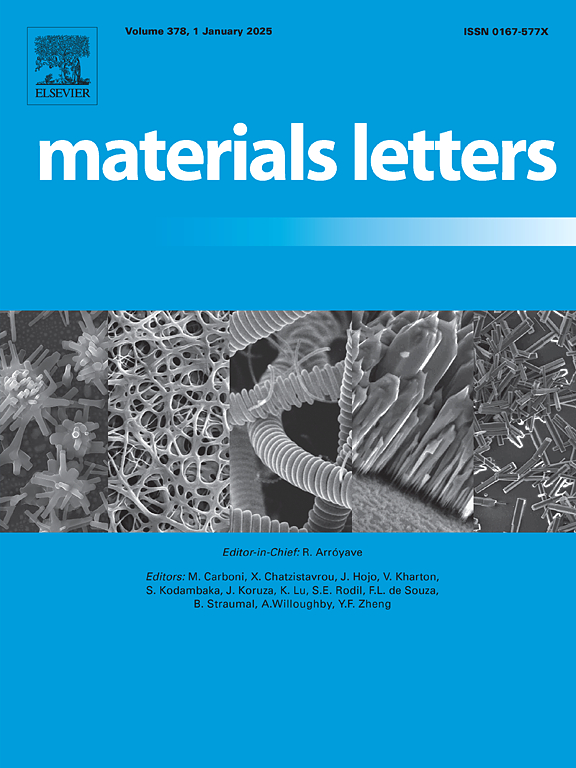硼梯度设计对激光熔覆铁基涂层组织和性能的影响
IF 2.7
4区 材料科学
Q3 MATERIALS SCIENCE, MULTIDISCIPLINARY
引用次数: 0
摘要
研究了硼梯度设计对45钢基激光熔覆铁基涂层显微组织、显微硬度和磨损性能的影响。通过激光熔覆制备了两种涂层系统:硼含量从1.6 wt%逐渐增加到6.0 wt%的梯度涂层,以及硼含量恒定为6.0 wt%的均匀多层涂层。综合表征表明,随着硼含量的增加,梯度涂层的硼化物形态呈现出由网状共晶到簇状,再到粗棒状/块状的可控演化过程。与基材相比,两种涂层的显微硬度和摩擦系数都相当,而梯度设计通过成分梯度优化有效地缓解了层间应力集中,减少了穿透裂纹等缺陷,从而实现了从界面结合区到表层的微观结构和性能的协调优化。本文章由计算机程序翻译,如有差异,请以英文原文为准。
Effect of boron gradient design on the microstructure and properties of laser-clad Fe-based coatings
This study investigated the effect of boron gradient design on the microstructure, microhardness, and wear properties of laser-clad Fe-based coatings on 45 steel substrates. Two coating systems were fabricated by laser cladding: a gradient coating with boron content progressively increasing from 1.6 to 6.0 wt% across four layers, and a uniform multilayer coating with constant 6.0 wt% boron content. Comprehensive characterization revealed that the gradient coating exhibited a controlled evolution of boride morphology from networked eutectic to clustered-shape and finally to coarse, rod-like/blocky structures with increasing boron content. While both coatings achieved comparable microhardness and reduced friction coefficients compared to the substrate, the gradient design effectively alleviated interlayer stress concentration through compositional gradient optimization, reducing defects such as penetrating cracks, thereby achieving a coordinated optimization of microstructure and properties from the interfacial bonding zone to the surface layer.
求助全文
通过发布文献求助,成功后即可免费获取论文全文。
去求助
来源期刊

Materials Letters
工程技术-材料科学:综合
CiteScore
5.60
自引率
3.30%
发文量
1948
审稿时长
50 days
期刊介绍:
Materials Letters has an open access mirror journal Materials Letters: X, sharing the same aims and scope, editorial team, submission system and rigorous peer review.
Materials Letters is dedicated to publishing novel, cutting edge reports of broad interest to the materials community. The journal provides a forum for materials scientists and engineers, physicists, and chemists to rapidly communicate on the most important topics in the field of materials.
Contributions include, but are not limited to, a variety of topics such as:
• Materials - Metals and alloys, amorphous solids, ceramics, composites, polymers, semiconductors
• Applications - Structural, opto-electronic, magnetic, medical, MEMS, sensors, smart
• Characterization - Analytical, microscopy, scanning probes, nanoscopic, optical, electrical, magnetic, acoustic, spectroscopic, diffraction
• Novel Materials - Micro and nanostructures (nanowires, nanotubes, nanoparticles), nanocomposites, thin films, superlattices, quantum dots.
• Processing - Crystal growth, thin film processing, sol-gel processing, mechanical processing, assembly, nanocrystalline processing.
• Properties - Mechanical, magnetic, optical, electrical, ferroelectric, thermal, interfacial, transport, thermodynamic
• Synthesis - Quenching, solid state, solidification, solution synthesis, vapor deposition, high pressure, explosive
 求助内容:
求助内容: 应助结果提醒方式:
应助结果提醒方式:


